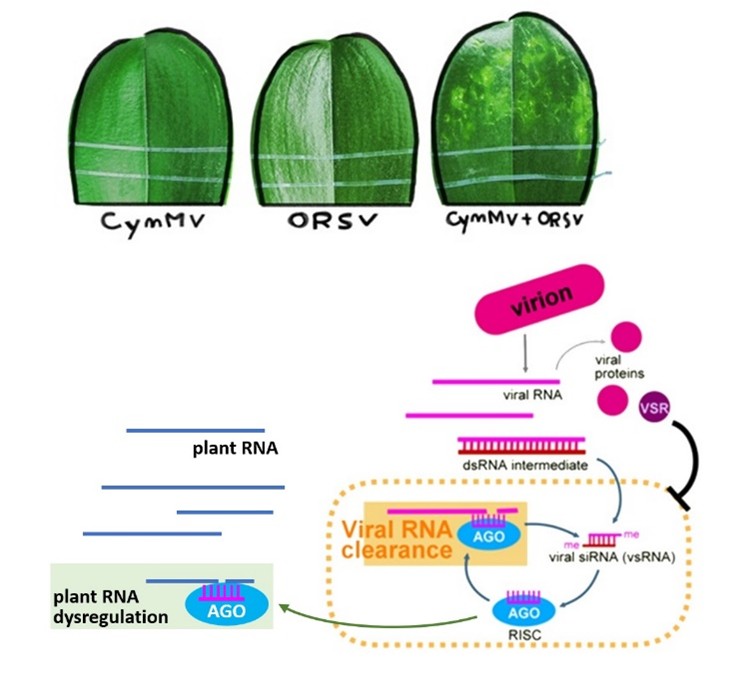Genome-wide analysis of small RNAs from Odontoglossum ringspot virus and Cymbidium mosaic virus synergistically infecting Phalaenopsis
Orchids, one of most important economic ornamental plants, constitute approximately 70-80% of the total value of flower exports in Taiwan. However, the orchids are severely infected with Cymbidium mosaic virus (CymMV) and Odontoglossum ringspot virus (ORSV) worldwide. The co-infection of these two viruses not only generate synergism thus exacerbating symptoms, but also increase the viral titers. To explore the molecular mechanism of the synergism, teams of Dr. Lin Na-Sheng and Dr. Zhang Yao-Chien of National Taiwan University investigated the viral small interfering RNA (vsiRNAs), which are the hallmarks of plant main antiviral mechanism, gene silencing. No matter Phalaenopsis orchids are single or mixed infected, early or late stage of infection with these two viruses, the genome-wide analysis of the vsiRNAs revealed that most vsiRNA features remained unchanged in terms of polarity and sizes, but additional ORSV vsiRNA hotspot peaks were prominent with double infection. The potential vsiRNA-mediated regulation of the novel targets in double-infected tissues thereby provides a different view of CymMV and ORSV synergism. Hence, temporally profiled vsiRNAs from taxonomically distinct CymMV and ORSV illustrate active antiviral RNA silencing in their natural host, Phalaenopsis, during both early and late stages of infection. Our findings provide insights into offence–defence interactions among CymMV, ORSV and orchids, which may laydown the groundwork for developing antiviral defense strategies in Phalaenopsis orchids.
Molecular Plant Pathology, 2020, 21(2):188-205.
DOI: 10.1111/mpp.12888